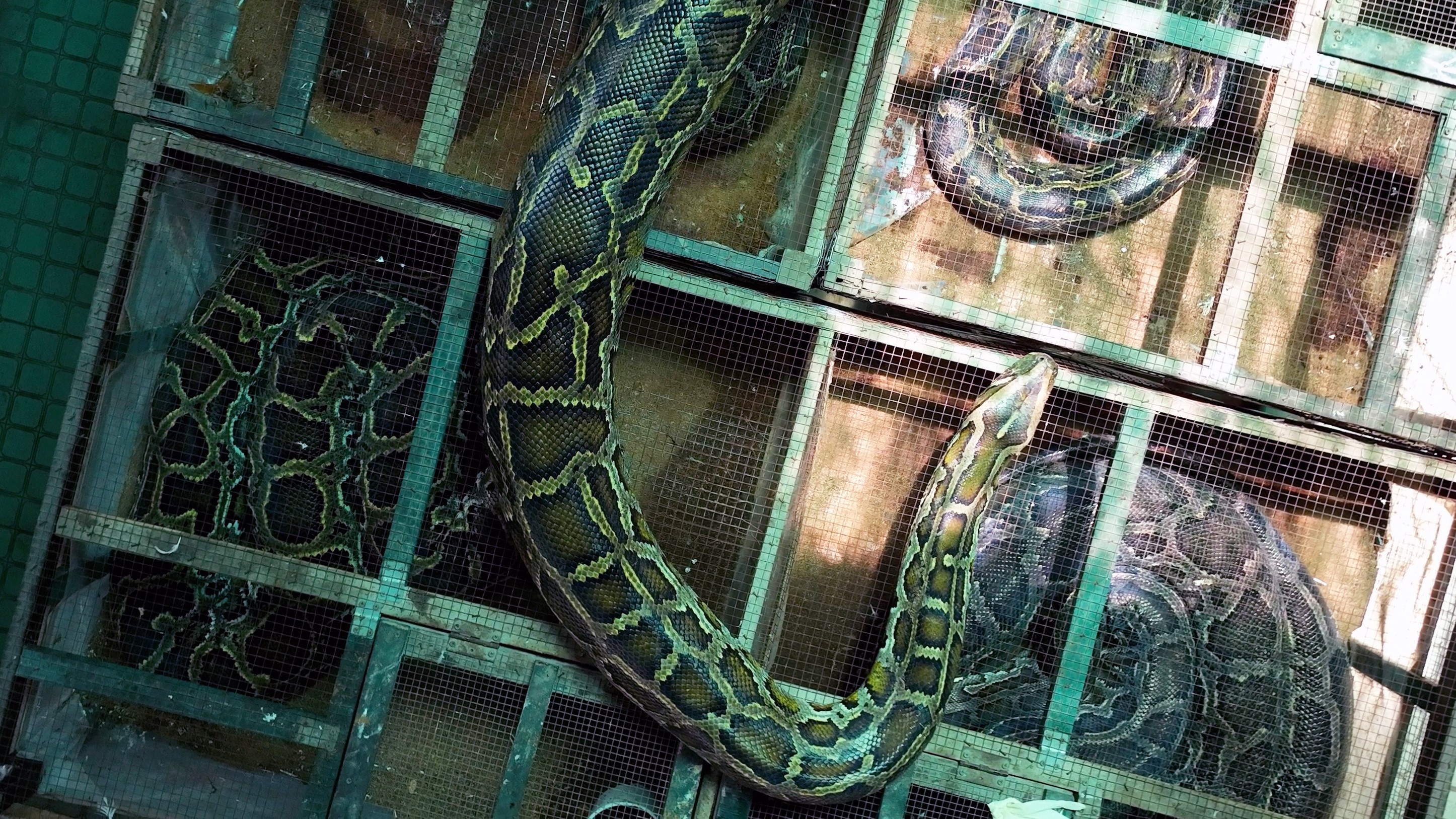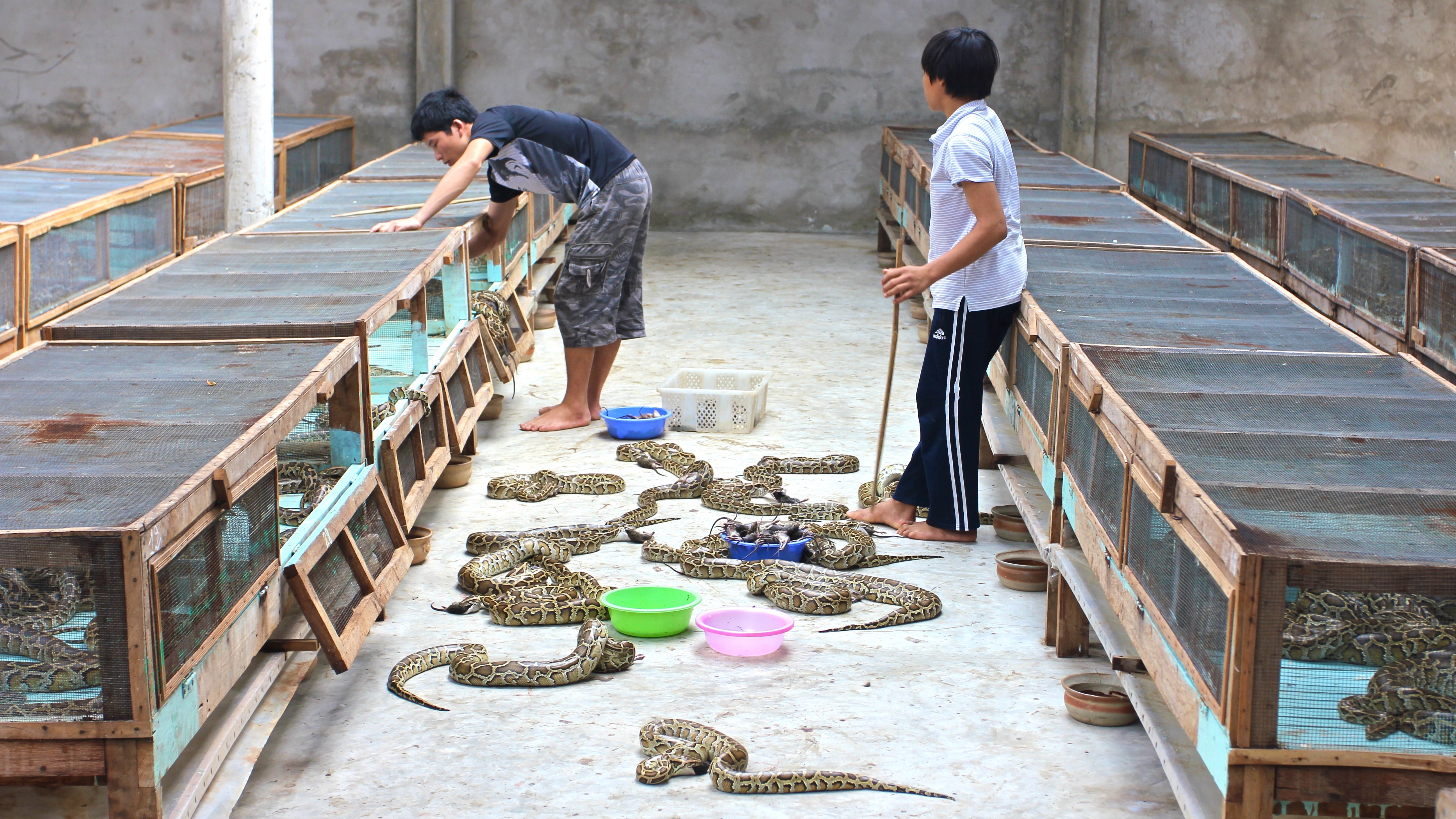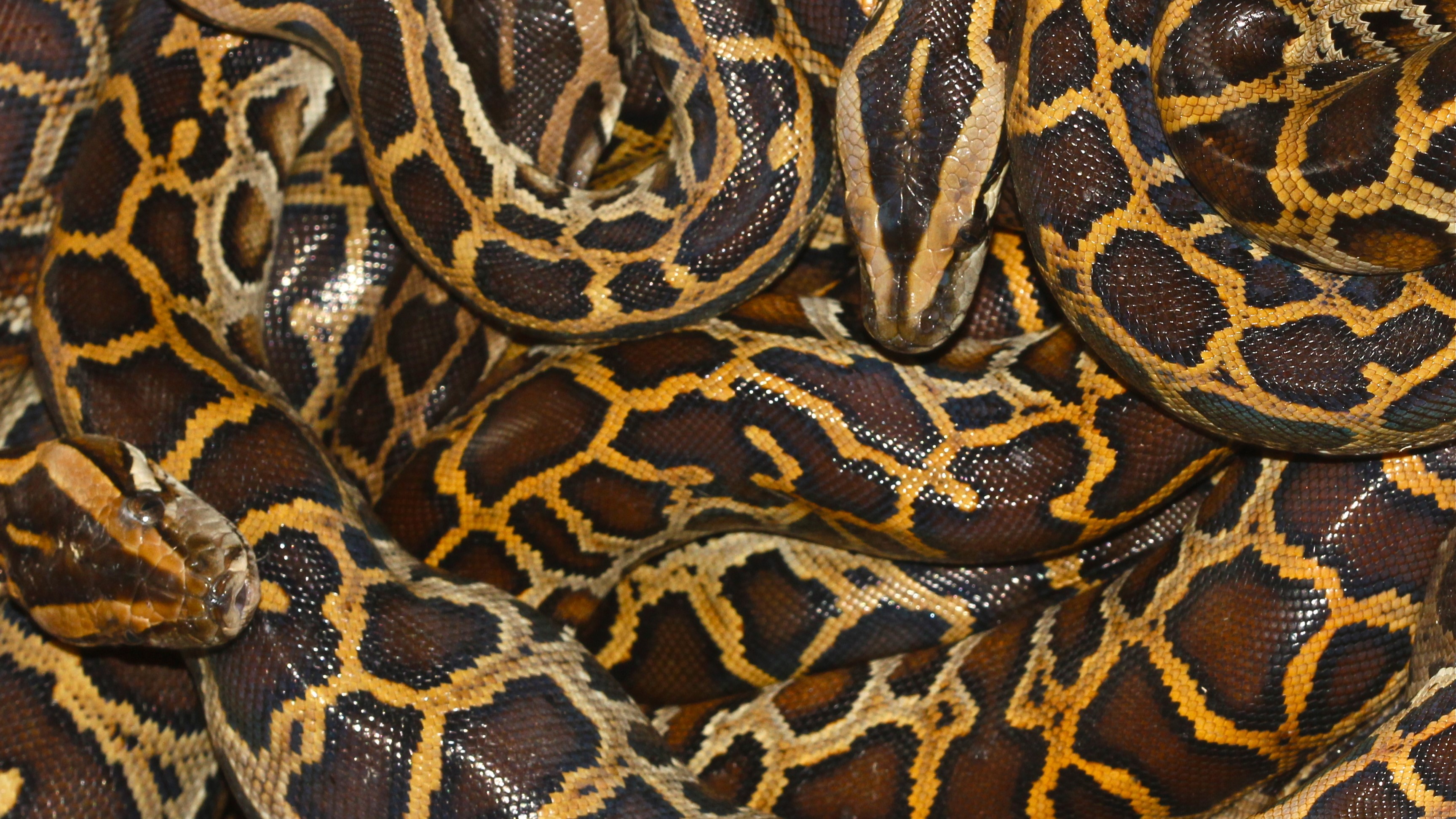What does python taste like? Because it could be slithering onto our dinner plates.
A study conducted on two snake farms has found that breeding pythons for meat is more energy and resource-efficient than current livestock production, offering a viable protein alternative.

Python meat is a low-effort and sustainable protein alternative that could soon slither onto our dinner plates, scientists suggest.
The researchers argue there are a plethora of benefits to farming pythons, including the snakes' ability to fast for extended periods of time, their low space and water requirements and minimal waste production.
Due to their large body size and fast growth rates — and without legs or wings to worry about — pythons are a highly efficient source of meat. The scientists published their findings Thursday (March 14) in the journal Scientific Reports.
"These animals are extremely good converters of food and particularly protein," study co-author Patrick Aust, a zoologist and research associate at the University of Oxford in the U.K., told ABC News. "Literally, they are specialists [at] making the most of very little."
Python farming is well-established in Asia but is yet to take off in other regions, according to the study. With current livestock production systems struggling to meet sustainability standards and growing demand, however, it may be time to consider alternatives.
Related: Enormous Burmese python killed in Florida Everglades was about to lay 60 eggs
"Over the last two decades, snake farming has expanded," the authors wrote in the study. "Reptile meat is not unlike chicken: high in protein, low in saturated fats, and with widespread aesthetic and culinary appeal."
Get the world’s most fascinating discoveries delivered straight to your inbox.
The researchers monitored the growth rates of newborn Burmese (Python bivittatus) and reticulated (Malayopython reticulatus) pythons at two farms — one in Thailand's Uttaradit province and the other in Ho Chi Minh City, in Vietnam. Despite receiving food only once per week, both species grew rapidly and put on up to 1.6 ounces (46 grams) per day over a period of 12 months — by which time they can be slaughtered for meat, skins and other products. Female pythons grew larger than males, likely due to natural sex differences.
The researchers fed the pythons a variety of diets, including thawed frozen chicken, wild-caught rodents, fishmeal, chicken pellets and waste products from pork production.
Roughly a quarter of the food ingested by the snakes was converted to meat, regardless of which diet they were fed, and 82% of the snakes' body mass was edible meat by the end of the experiment. For comparison, the meat harvested from cattle generally amounts to about 63% of a cow's weight.
"In terms of food and protein conversion ratios, pythons outperform all mainstream agricultural species studied to date," the researchers wrote in the study. "Production efficiencies for pythons were higher than those reported for poultry, pork, beef, salmon, and crickets."
Pythons also maintained their body mass during periods of fasting that lasted as long as 127 consecutive days thanks to their flexible metabolism. Adult Burmese and reticulated pythons can weigh more than 220 pounds (100 kilograms) and females can produce up to 100 eggs per year, meaning they are "well suited for commercial production," according to the study.
The researchers highlighted the potential role of python farming in controlling rodent pests and upcycling waste products from other meat industries and agri-food supply chains, if the snakes are fed a diet rich in rodents and waste protein.
The only remaining hurdle to putting python meat on dinner plates is a limited understanding of how to keep thousands of these snakes in captivity, the authors wrote — that, and "the general fear humans have toward snakes."

Sascha is a U.K.-based staff writer at Live Science. She holds a bachelor’s degree in biology from the University of Southampton in England and a master’s degree in science communication from Imperial College London. Her work has appeared in The Guardian and the health website Zoe. Besides writing, she enjoys playing tennis, bread-making and browsing second-hand shops for hidden gems.




